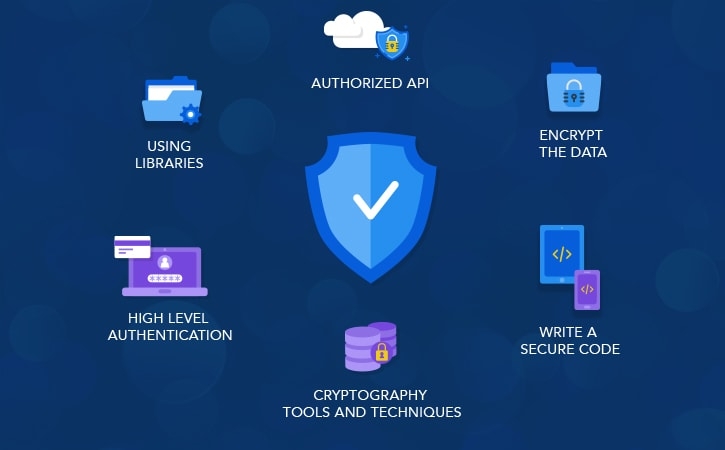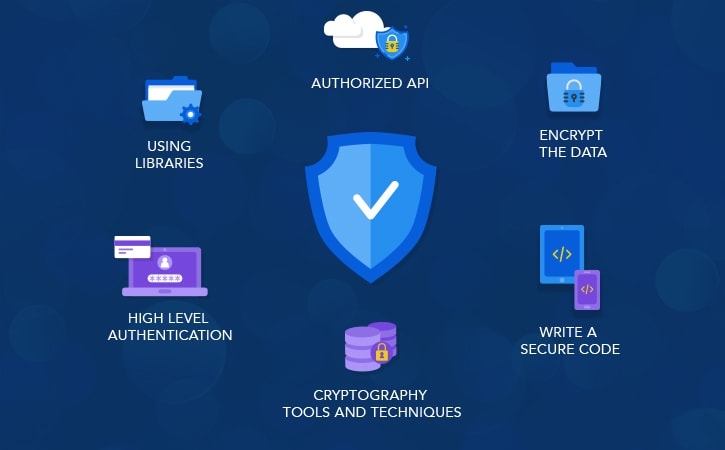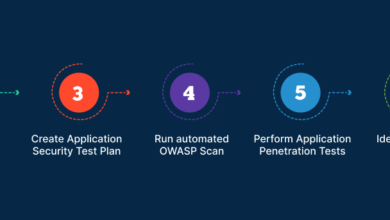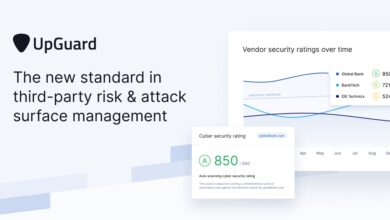
Empower Your Developers Own App Security
Empower your developers to manage application security vulnerabilities on their own—it sounds radical, right? But in today’s fast-paced development world, shifting security responsibility towards the developers isn’t just a trend; it’s a necessity. This approach, often called “DevSecOps,” aims to bake security into the development process from the ground up, rather than treating it as an afterthought. This means faster fixes, fewer vulnerabilities, and a more secure application overall.
But it’s not a simple switch; it requires careful planning, the right tools, and a commitment to training. Let’s dive in and explore how to make this shift successfully.
This post will cover the key aspects of empowering your development team to own application security. We’ll examine the benefits and challenges, explore essential tools and technologies, detail necessary training, and discuss best practices for secure coding. We’ll also look at how to measure success and address common obstacles you might encounter along the way. By the end, you’ll have a clear roadmap to implement a developer-led security model within your organization.
Defining Developer-Led Security

Developer-led security, also known as DevSecOps, represents a significant shift in how organizations approach application security. Instead of relying solely on a dedicated security team to identify and remediate vulnerabilities, this model empowers developers to integrate security practices throughout the software development lifecycle (SDLC). This proactive approach aims to prevent vulnerabilities from ever reaching production, leading to significant improvements in application security posture.
Benefits of Developer-Led Security
Shifting security responsibility towards developers offers several key advantages. Faster remediation times are a major benefit; developers are intimately familiar with the codebase, enabling quicker identification and resolution of vulnerabilities. This reduces the time it takes to patch security flaws, minimizing the window of opportunity for exploitation. Furthermore, integrating security early in the SDLC reduces the cost of fixing vulnerabilities, as addressing issues during development is significantly cheaper than doing so in production.
Finally, a developer-led approach fosters a security-conscious culture within the development team, making security everyone’s responsibility, not just the security team’s.
Challenges of Developer-Led Security and Mitigation Strategies
While developer-led security offers considerable advantages, it’s not without its challenges. Developers may lack the specialized security expertise needed to identify and address complex vulnerabilities. To mitigate this, organizations should provide comprehensive security training, equipping developers with the knowledge and skills to effectively handle security tasks. Another challenge is the potential for security to become an added burden on already busy developers.
Careful planning and the use of automated security tools are crucial here. Automating tasks like static and dynamic code analysis frees up developers’ time, allowing them to focus on more complex security issues. Finally, integrating security into the development process requires careful planning and management to avoid slowing down the development cycle. This can be achieved through agile methodologies and the use of continuous integration/continuous delivery (CI/CD) pipelines that incorporate security checks.
Comparison with Traditional Security Team-Led Vulnerability Management
Traditional approaches often involve a dedicated security team responsible for identifying and remediating vulnerabilities, typically through penetration testing or vulnerability scans after the application is developed. This reactive approach is slower, more expensive, and often leads to disruptions in the development cycle. In contrast, a developer-led approach integrates security into every stage of the SDLC, preventing vulnerabilities from arising in the first place.
While a dedicated security team still plays a crucial role in providing guidance, training, and specialized expertise, the responsibility for day-to-day security is shared across the development team. This collaborative model leads to faster response times, reduced costs, and a more secure software development process.
Roles and Responsibilities in a Developer-Led Security Model
The success of a developer-led security model hinges on clearly defined roles and responsibilities. The following table Artikels a sample structure:
| Role | Responsibility | Tools | Training Needed |
|---|---|---|---|
| Developer | Write secure code, perform code reviews, use static analysis tools, address vulnerabilities in their code. | Static Application Security Testing (SAST) tools, Dynamic Application Security Testing (DAST) tools, IDE plugins, secure coding guidelines. | Secure coding practices, OWASP Top 10, common vulnerability types, use of security tools. |
| Security Champion | Provide security guidance, training, and support to developers. | Vulnerability databases, security documentation, training materials. | Deep security expertise, strong communication skills, knowledge of development processes. |
| Security Architect | Design secure architectures and systems. | Threat modeling tools, architecture design tools, security standards. | Advanced security knowledge, architecture design expertise, understanding of security frameworks. |
| Security Team | Perform penetration testing, vulnerability scanning, and security audits. Provide advanced security expertise and support. | Penetration testing tools, vulnerability scanners, security auditing tools. | Extensive security expertise, knowledge of various attack vectors and mitigation strategies. |
Essential Tools and Technologies
Empowering developers to manage application security is crucial for building secure software. This requires equipping them with the right tools and integrating security seamlessly into their workflows. The following sections detail essential tools and techniques for effective developer-led security.
Static and Dynamic Application Security Testing (SAST/DAST) Tools
SAST tools analyze source code for vulnerabilities without executing the application, while DAST tools test the running application to identify vulnerabilities. Popular examples include SonarQube (SAST), which analyzes code for various flaws, and OWASP ZAP (DAST), which performs automated security scans of web applications. Integrating these tools into the CI/CD pipeline allows for early detection of vulnerabilities, reducing the cost and effort of remediation later in the development lifecycle.
For instance, a SonarQube scan could be triggered automatically after each code commit, flagging potential issues for the developer to address before merging the code.
Software Composition Analysis (SCA) Tools
Modern applications rely heavily on third-party libraries and open-source components. SCA tools help identify vulnerabilities in these dependencies, which can often be a significant source of security risks. Tools like Snyk and Black Duck provide comprehensive analysis of the software bill of materials (SBOM) and highlight known vulnerabilities within the used components. Integrating SCA into the CI/CD pipeline ensures that the use of vulnerable components is detected early, preventing their introduction into production environments.
For example, a failed SCA scan could halt the CI/CD pipeline, requiring developers to update vulnerable dependencies before proceeding.
Interactive Application Security Testing (IAST) Tools
IAST tools provide runtime security testing by instrumenting the application. This allows for the detection of vulnerabilities that are difficult to find with SAST or DAST. Tools like Contrast Security and Secure Code Warrior provide real-time feedback to developers during the development process. IAST tools can be integrated into the development environment, providing immediate alerts about vulnerabilities as they are introduced.
This enables developers to address security concerns proactively, making the process of vulnerability remediation more efficient.
Integrating Security Tools into the CI/CD Pipeline
Integrating security tools into the CI/CD pipeline is essential for automating security testing and ensuring that vulnerabilities are detected early in the development process. This involves configuring the pipeline to trigger automated scans using tools like SAST, DAST, and SCA at various stages of the development process. For example, SAST scans can be run after each code commit, DAST scans can be run before deployment to staging, and SCA scans can be run before merging code from a feature branch.
This automated approach ensures consistent security testing and reduces the risk of deploying vulnerable applications.
Automated Security Testing Implementation
Automated security testing is critical for efficient vulnerability management. It enables continuous monitoring and early detection, significantly reducing the time and cost associated with fixing vulnerabilities. Implementing automated security testing involves selecting appropriate tools (as discussed above), integrating them into the CI/CD pipeline, and defining clear thresholds for acceptable vulnerability levels. Failure to meet these thresholds should trigger alerts and potentially halt the pipeline, preventing the deployment of insecure code.
For example, a predefined threshold of zero critical vulnerabilities could be set, halting the pipeline if any critical vulnerabilities are detected.
Developer’s Role in the Vulnerability Lifecycle
“`mermaidgraph LR A[Code Development] –> B(SAST/SCA Scan); B –> CVulnerability Found?; C — Yes –> D[Remediation]; D –> E[Retest]; E –> FVulnerability Resolved?; F — Yes –> G[Code Merge]; F — No –> D; C — No –> G; G –> H[Deployment]; H –> I[DAST Scan]; I –> JVulnerability Found?; J — Yes –> K[Remediation/Rollback]; J — No –> L[Production];“`This diagram illustrates the developer’s active role in identifying, remediating, and retesting for vulnerabilities throughout the development and deployment process.
The developer is responsible for addressing issues flagged by automated scans, ensuring the application remains secure at every stage.
Training and Education
Empowering developers to manage application security requires a robust training program. It’s not enough to simply hand them tools; they need the knowledge and skills to use them effectively and understand the underlying security principles. A well-structured training program will bridge the gap between development and security, fostering a culture of shared responsibility.Effective developer security training goes beyond theoretical concepts; it focuses on practical application and hands-on experience.
This ensures developers not only understand the “why” behind security best practices but also the “how” – enabling them to integrate security seamlessly into their daily workflow. A blended learning approach, combining online modules, workshops, and on-the-job mentoring, provides the most comprehensive and impactful training experience.
Essential Security Concepts for Developers
Developers need a strong foundation in several key security concepts. Understanding the OWASP Top 10 vulnerabilities is paramount. This list highlights the most critical risks, providing a focused area of study. Beyond the OWASP Top 10, developers should also grasp concepts like authentication, authorization, input validation, output encoding, secure coding practices for different programming languages, and the basics of cryptography.
Understanding the software development lifecycle (SDLC) and how security integrates into each phase is also crucial. This knowledge forms the bedrock upon which effective vulnerability management is built.
A Curriculum for Developer Security Training
A comprehensive training program should incorporate several key modules. The first module should cover foundational security concepts, including the OWASP Top 10, common attack vectors, and the importance of secure coding principles. The second module should focus on practical application, including hands-on exercises and coding challenges that simulate real-world scenarios. For example, developers might practice secure coding techniques in their preferred language, learn how to use static and dynamic application security testing (SAST/DAST) tools, and explore vulnerability remediation strategies.
A third module might cover secure design principles and architectural considerations. Finally, a module on incident response and vulnerability management procedures would prepare developers for handling security incidents effectively. This structured approach ensures developers gain both theoretical knowledge and practical skills.
Resources for Developer Security Training
Numerous resources are available to support developer security training. OWASP’s website provides a wealth of information, including the OWASP Top 10, cheat sheets, and various tools. The SANS Institute offers numerous security courses, including those tailored to developers. Many online platforms, such as Coursera and Udemy, provide courses on secure coding practices and application security. Finally, vendor documentation for various security tools can be an invaluable resource.
For example, documentation for SAST tools will guide developers on integrating these tools into their development workflow and interpreting the results. By utilizing a combination of these resources, organizations can create a robust and effective training program.
Security Best Practices and Coding Standards: Empower Your Developers To Manage Application Security Vulnerabilities On Their Own
Empowering developers to manage application security requires a robust understanding of secure coding practices and the adoption of stringent coding standards. This isn’t just about fixing bugs; it’s about proactively preventing vulnerabilities from ever entering the codebase. By integrating security into the development lifecycle from the outset, we significantly reduce the risk of costly and time-consuming security breaches.
Secure Coding Practices
Secure coding involves a multifaceted approach, focusing on minimizing vulnerabilities at every stage of the development process. This includes input validation, output encoding, and the careful management of access controls and authentication mechanisms. Ignoring these practices can lead to significant security flaws.
- Input Validation: Always sanitize and validate user inputs before processing them. Never trust data coming from external sources. This prevents injection attacks (SQL injection, cross-site scripting, etc.). For example, always check the length, data type, and format of user inputs, and escape special characters before using them in database queries or displaying them on a web page.
- Output Encoding: Encode data before displaying it to the user. This prevents cross-site scripting (XSS) attacks by neutralizing potentially harmful characters. Different encoding methods are required depending on the context (HTML, JavaScript, etc.).
- Access Control: Implement robust access control mechanisms to restrict access to sensitive data and functionality. Use the principle of least privilege, granting users only the necessary permissions. Regularly review and update access control lists.
- Authentication: Employ strong authentication mechanisms to verify the identity of users. Avoid using easily guessable passwords or storing passwords in plain text. Use hashing algorithms (like bcrypt or Argon2) to securely store passwords.
- Session Management: Securely manage user sessions to prevent session hijacking. Use short session timeouts, strong session IDs, and HTTPS.
Common Vulnerabilities and Prevention
Understanding common vulnerabilities is crucial for effective prevention. Let’s look at a few examples and their countermeasures.
- SQL Injection: Occurs when malicious SQL code is injected into user inputs, manipulating database queries. Prevention: Use parameterized queries or prepared statements to prevent SQL injection. Never directly concatenate user inputs into SQL queries.
- Cross-Site Scripting (XSS): Involves injecting malicious scripts into websites. Prevention: Encode all user-supplied data before displaying it on a web page. Use a web application firewall (WAF) to detect and block XSS attacks.
- Cross-Site Request Forgery (CSRF): Tricks users into performing unwanted actions on a website. Prevention: Use anti-CSRF tokens to verify that requests originate from the legitimate user.
Code Reviews and Peer Programming
Code reviews and peer programming are invaluable for identifying vulnerabilities. Having another developer examine your code provides a fresh perspective and can uncover errors that you might have missed. Peer programming, where two developers work together on the same code, promotes immediate identification and correction of potential security flaws.
Implementing Security Best Practices Across Languages
Implementing security best practices is language-specific, but the underlying principles remain consistent.
- Python: Use libraries like `SQLAlchemy` for secure database interactions and `bleach` for HTML sanitization. Validate user inputs thoroughly using regular expressions and type checking.
- Java: Use prepared statements for database interactions and leverage the Spring Security framework for authentication and authorization. Validate all inputs and use appropriate encoding techniques.
- JavaScript: Sanitize all user inputs before displaying them on the client-side. Use a framework like React or Angular, which often incorporate built-in security measures. Avoid using eval() to execute untrusted code.
Measuring Success and Continuous Improvement
Shifting security responsibility to developers requires a robust measurement system to gauge its effectiveness. Simply empowering developers isn’t enough; we need data to demonstrate the program’s impact and identify areas for improvement. This involves tracking key metrics, implementing continuous improvement strategies, and visualizing progress through dashboards.
Key Metrics for Developer-Led Security
Tracking the right metrics provides crucial insights into the success of a developer-led security program. These metrics should reflect both the quantity and quality of security improvements. Focusing solely on numbers can be misleading; understanding the context behind the numbers is equally important.
| Metric | Description | Measurement Method | Target |
|---|---|---|---|
| Number of vulnerabilities identified and remediated by developers | Tracks the volume of security issues addressed directly by developers. | Use a vulnerability management system (e.g., SAST, DAST, SCA tools) to track remediation efforts. | Aim for a consistent increase in remediated vulnerabilities each sprint/quarter. |
| Average time to remediate vulnerabilities | Measures the efficiency of the developer-led remediation process. | Track the time elapsed from vulnerability identification to successful remediation. | Aim to reduce this time by 25% within six months. |
| Developer participation rate in security training | Shows the level of engagement in security education. | Track completion rates of security training modules. | Aim for 100% participation within the first year. |
| Security-related code review participation rate | Demonstrates the extent to which developers are actively involved in peer code reviews for security. | Track the number of code reviews conducted with a focus on security. | Aim for 100% participation in security-focused code reviews. |
Continuous Improvement Strategies
Sustained improvement requires a commitment to ongoing learning and adaptation. Regular feedback loops, knowledge sharing sessions, and updated training materials are crucial.For example, a company might initially focus on addressing high-severity vulnerabilities. Once this is under control, they can expand their focus to medium and then low-severity issues, demonstrating a gradual improvement in overall security posture. This approach allows for manageable progress and avoids overwhelming the developers.
Regular retrospectives, where the team reflects on successes and challenges, are also invaluable.
Measuring Vulnerability Reduction
Tracking the overall reduction in vulnerabilities over time provides a clear picture of the program’s effectiveness. This involves comparing vulnerability counts across different periods (e.g., monthly, quarterly, annually). The use of vulnerability management tools is essential for this process, providing accurate and consistent data.For instance, a company might have identified 500 vulnerabilities at the start of the program.
After six months of implementing developer-led security initiatives, they might have reduced this number to 200, representing a 60% reduction. This demonstrable progress reinforces the value of the program.
Addressing Common Obstacles
Implementing developer-led security, while offering significant advantages, often faces hurdles. Successfully navigating these challenges requires a proactive approach that addresses both technical and cultural aspects within development teams. Understanding and mitigating these obstacles is crucial for building a robust and effective security program.
Developer Resistance and Lack of Buy-in
Gaining developer buy-in is paramount. Developers often perceive security practices as adding unnecessary complexity and slowing down development cycles. This resistance stems from a lack of understanding of the importance of security, limited training, or previous negative experiences with cumbersome security tools. To overcome this, a phased approach is key. Start with small, manageable security improvements, demonstrating tangible benefits and gradually expanding the program.
Regular feedback sessions and clear communication of the “why” behind security initiatives are vital. Showcasing successful integrations of security practices into the development workflow, highlighting reduced vulnerabilities and improved code quality, can significantly boost morale and encourage participation.
Conflicts Between Development Speed and Security Practices
The tension between rapid development and thorough security practices is a common challenge. Developers often prioritize speed and feature delivery, sometimes overlooking security considerations. This conflict can be mitigated by integrating security practices seamlessly into the development lifecycle, using automated tools and streamlined workflows. Implementing static and dynamic application security testing (SAST and DAST) tools early in the development process can identify vulnerabilities before they become major issues.
Shifting security left, integrating security checks into CI/CD pipelines, minimizes disruption and promotes a culture of proactive security. Prioritizing security from the outset, rather than treating it as an afterthought, significantly reduces the time and effort needed for remediation later.
Inadequate Training and Resources, Empower your developers to manage application security vulnerabilities on their own
Insufficient training and resources hinder the success of developer-led security. Developers need adequate training on secure coding practices, vulnerability analysis, and the use of security tools. Providing access to up-to-date documentation, online courses, and mentorship programs ensures that developers have the necessary knowledge and support. Investing in developer-friendly security tools that integrate smoothly with existing workflows minimizes disruption and encourages adoption.
Regular security awareness training and workshops can reinforce best practices and foster a security-conscious culture. Furthermore, providing access to internal security experts for guidance and consultation can significantly reduce the burden on developers.
Examples of Successful Developer-Led Security Programs
Many organizations have successfully implemented developer-led security programs. For example, Stripe, a payment processing company, has a strong emphasis on developer-led security, integrating security practices deeply into their development culture. Their success stems from a combination of comprehensive training programs, automated security testing tools, and a culture that prioritizes security as a shared responsibility. Another example is Etsy, which empowers its developers with a robust set of security tools and resources, coupled with a strong security culture.
Key success factors in these programs include clear communication, consistent training, readily available resources, and a culture of collaboration and shared responsibility. They also leverage metrics to track progress and continuously improve their security posture.
Final Thoughts

Ultimately, empowering your developers to manage application security vulnerabilities is a journey, not a destination. It’s about fostering a culture of security awareness and responsibility within your development team. By providing the right tools, training, and support, you can build a more secure and efficient development process. Remember, it’s not about replacing your security team, but about creating a collaborative partnership where developers become active participants in securing the applications they build.
The result? Stronger security, faster development cycles, and a happier, more empowered team.
Popular Questions
What if my developers lack the security expertise?
Invest in comprehensive training programs. Start with foundational security concepts and gradually increase complexity. Hands-on workshops and mentorship opportunities are also very effective.
How do I ensure developers prioritize security without slowing down development?
Integrate security tools into your CI/CD pipeline for automated testing. Focus on preventing vulnerabilities early in the development cycle rather than fixing them later. Emphasize the long-term benefits of secure coding.
What if a developer introduces a critical vulnerability?
Establish clear processes for reporting and remediating vulnerabilities. Focus on learning from mistakes and improving processes rather than assigning blame. Regular code reviews and peer programming can help prevent such issues.
How do I measure the success of this approach?
Track key metrics like the number of vulnerabilities found, the time taken to remediate them, and the overall reduction in security incidents. Regularly review these metrics and adjust your approach as needed.





